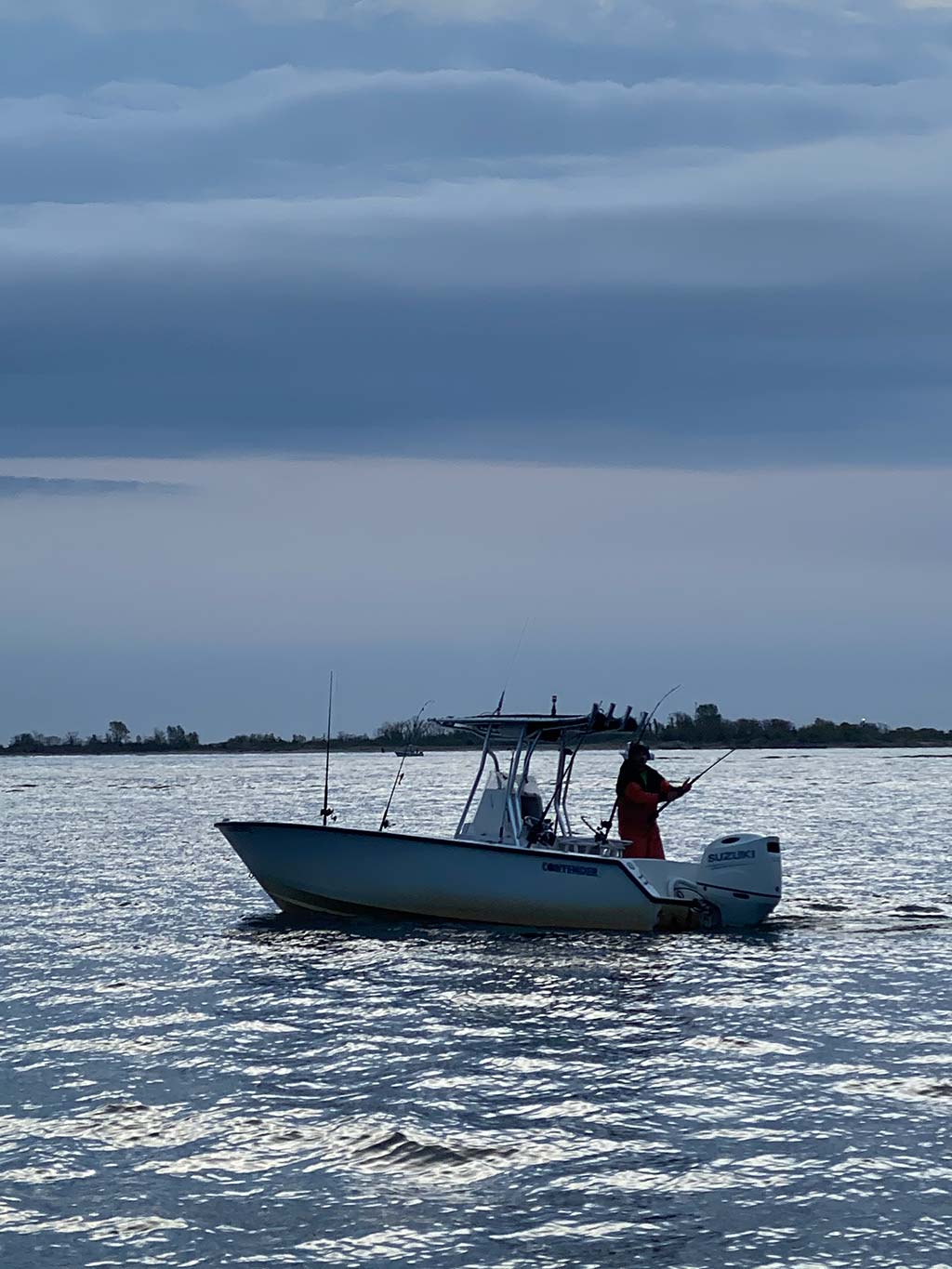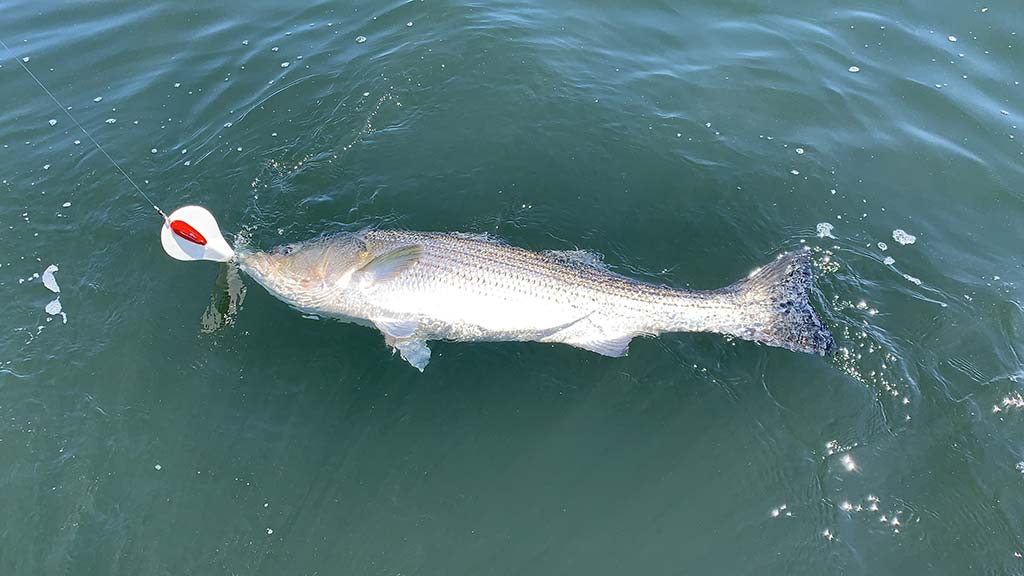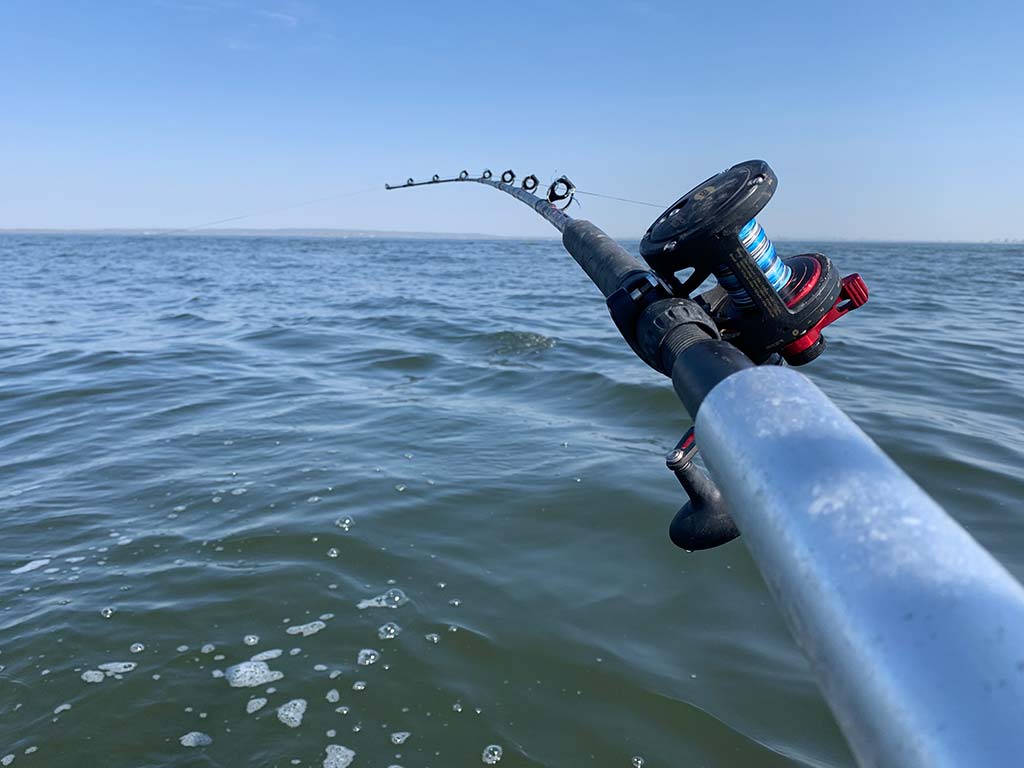
As much as I love to troll up gamefish with buddies and charter clients, I also thoroughly relish time by myself. Perhaps it’s genetic; my father, uncles, and grandfather lived inland back in their heydays in the 60s, 70s, and 80s, yet they all drove to the coast and fished separately on their boats; albeit within the same waters and often right next to each other.
There are pros and cons to the approach, of course. With rising fuel prices, having partners provides distribution of the daily expenses. Conversation with friends and family is a great way to catch up while creating memories. And if it’s excessively hot or cold, moral support in pumping one another up for the outing gets the juices flowing.
To some, the pros of going it alone include coming and going without having to discuss parameters with anyone whatsoever. Want to change the departure time, or perhaps come in a little earlier than planned? No problem! If a buddy bails due to an overnight stomach bug, it’s still a “go.” Unlimited reeling may be a blast to some, but that can work the other way too. If the striper or tuna troll is off the hook insane, “help” is highly beneficial! Multiple hook-ups lead to so many fish on the line and one angler to crank them up. I recall times when four tandem mojo set-ups all got hit at once. Eight stripers at once for a one person crew. It’s a wild scene; no net, just grasp the mojo head and unhook them to swim away no worse for wear, never bringing them into the vessel.
I’d venture to say that I have a 0% to 2% mortality rate when trolling striped bass; as fish are reeled to the boat, they continuously have fresh, oxygenated water flushed over their gills, and rarely are they ever hooked deep. So whether alone or with partners, trolling properly is pretty supportive to the fishery.

One-Man Vessel
Those with autopilot are in the best situation for trolling alone. Setting a heading and having the boat maintain that heading without turning one way or the other is of superior value. Those with this feature are fortunate in being in the driver’s seat, able to move around the boat addressing lines, tackle and fish on the hook without the boat changing the bearing entered.
Those without autopilot have a more daunting task that practice will improve. Each boat is not set up the same, as we all know. When it comes to trolling alone, small to modest vessels afford some advantages. The ability to steer within quick reach of rods in the trolling spread is invaluable. Smaller center consoles under 24 feet lead the pack in ease for trolling alone. My 21-foot center console lets me fish offshore and deploys a nice spread of lines while I maintain steering and still tend to each rod. That is, I can deploy, reel in, and change the amount of line deployed, all while staying a body shift or a couple of steps from the throttle and wheel.
| TACKLE RECOMMENDATIONS |
| Stout gear is always helpful when trolling alone and landing stripers. I use PENN Rampage rods paired with PENN Fathom 30 lever drags for striped bass, lined with 50-pound Berkley X9 braid. The backbone helps get the fish boatside where I can just grasp the drail or the mojo head in order to stabilize the fish. I always keep my weight in the boat, so in case I slip, I may bruise my ribs, but I’ll still be in the boat. Offshore, I use the PENN International 50 wides on PENN Ally rods. Since I have a lot of lines out and it’s only me, I have to maintain excellent line capacity in case of multiple hook-ups. |
It’s essential to keep a continuous heading so that wind can’t turn the boat sideways, causing lines to cross, tangle, or snag on the bottom. A heavy wind turning the boat too much in one direction too quickly is a total disaster. It’s the worst possible scenario. If this does take place, all lines should be reeled in as rapidly as possible and inspected for issues.
Center consoles provide some of the best sightlines while the individual angler moves throughout the boat. That 360-degree vision is critical when reeling or deploying takes place facing the other direction. The angler can see obstacles in the water or any other boats that creep into the area. I’ve become very adept at doing multiple tasks and I enjoy that process. The system becomes second nature. I would, however, suggest that solo trollers learn their craft away from fleets or hazards.
Larger vessels like downeast style boats and those with cabins in the bow require different systems, perhaps even a second steering helm toward the stern. Truthfully, those kinds of boats possess many advantages, but being underway on the troll without a second person is very difficult, if not impossible. The sightlines are just too difficult much of the time. If an angler cannot see entirely around the boat while trolling alone, then it’s best to skip this tactic and seek a partner at all times.
Singular Spread
Keep in mind that pulling multiple lines solo requires some reflection on realistic trolling spreads; addition by subtraction may apply. For example, I usually run two Tony Maja Spoon setups and two Bluewater Candy mojos when probing the ocean with a partner. But when it’s rough, I maintain two wire outfits in the outrodders and a Bluewater Candy Striperbrella paired with a heavy drail down the middle. In essence, I run three rods instead of four because it’s easier to handle in every way. The outrodders and heavily-weighted lure down the middle help lines stay clear of each other, even on tighter turns.
Sterling Tackle has revolutionized trolling with its Wide Trackers on the tuna grounds. The keel sends the spreader bars far outside of the wake on each side of the boat. I have an 8-foot, 4-inch beam and no outriggers, but I pull seven lines by myself on an ideal day with reasonable seas. If there is a sloppy sea, I’ll drop to four to six lines, once again emphasizing boat control. A couple of flatlines with Sterling Crazy 8’s, two Wide Trackers, and a Joe Shute down the middle is a typical spread for me on a chopped up, “big seas” day, but I’ll gladly add two more Wide Tracker Chaos Bars when it’s calm.
So you’ve done all the work and the drag starts screaming, now what? The first thing I do if I’m trolling mojos or umbrellas for striped bass is I’ll reel those lines up halfway. I don’t even touch the rod that is hooked up. Instead, I get the terminal tackle on the other lines away from the bottom – it’s essential. Then I throttle down to the speed just above idle, where I can begin to crank in the striped bass. Occasionally, I take turns cranking each reel 20 feet while the rod with the fish is in the holder still (think Wicked Stripah). I don’t bring the other gear in; in fact, there’s a decent chance they’ll get struck even at a slow speed higher in the water column.
With the boat in gear and fish on the line, generally the bass will stay fairly straight back. I do have to watch and move around the other lines, but it’s not the same as a mahi that goes completely perpendicular to the vessel. As the striper approaches the boat, the chances that the fish will foul in the other lines becomes much higher; this is where experience helps. I don’t use a net on the troll. I simply grasp the fish by the mouth or the mojo and pick it up if I want to bring it aboard or unhook it to swim away.
While all this is happening, I try to keep the boat going in the same direction as the wind and current. This keeps the boat cruising pretty straight. When I need to reach back and tweak the steering wheel, I do so with ease. Other times, I use my elbow or even my hip to hold the boat steady while cranking up a fish.

Wind & Waves
If I’m steering into a sizeable or irritating chop with wind gusts when I hook up, then I slowly make a huge, gradual U-turn so I’m then reeling and riding with a following sea. This is when the seas are just too much for me to handle the task of steering and reeling at the same time. The turn must be subtle so lines don’t cross and tangle. Furthermore, this should solidify the reasons why fishing fewer lines on a windy day can help make trolling alone more manageable.
I generally do not put the engine in neutral unless there is an absolute need. If other boats converge and I feel it’s safer for all the captains in the area, I will. When the boat does get placed in idle, the boat may turn sideways and the bass will often gain ground producing slack in the line. The captain must reel as fast as possible to keep the line tight, reducing the chance a fish will come off. When in idle, the other lines should be brought in the boat because they will bounce around and could drift toward the prop and engine area.
When I have to drop the boat into lower gear in the nearshore pelagics game, the lures stay high in the column so I don’t have to worry about the bottom snagging or fouling. I simply stay in gear and steer the gamefish to the boat. If needed, I’ll bring in any necessary lines, but I always do my best to remain deployed and weave the fish to the boat if he goes left or right. Bringing in five to seven lines is time-consuming for one person so if it can be avoided, I will. Sure, tangles occasionally happen, but that’s part of the solo troll game. Most of the time, things go as planned, but there are certainly times lines get hung on each other.
When it comes to river and bay trolling, very small lures trolled parallel and tight to the sod banks may yield mega striped bass counts when they are staging there. Jon boats, skiffs, you name it, and they’ll catch in the backwaters. Kayakers even use foot pedals to troll bass. Small curly tails on 3/8- to 1-ounce bucktails or jig heads work wonders. Two to four lines work great depending on boat control and captain’s skillset, but of course, the sightlines are fantastic in these open boats.
Trolling alone isn’t for everyone, but I truly enjoy it. Like all fishing, it can be further mastered with each outing. For those willing to learn the craft, it may open some doors.



